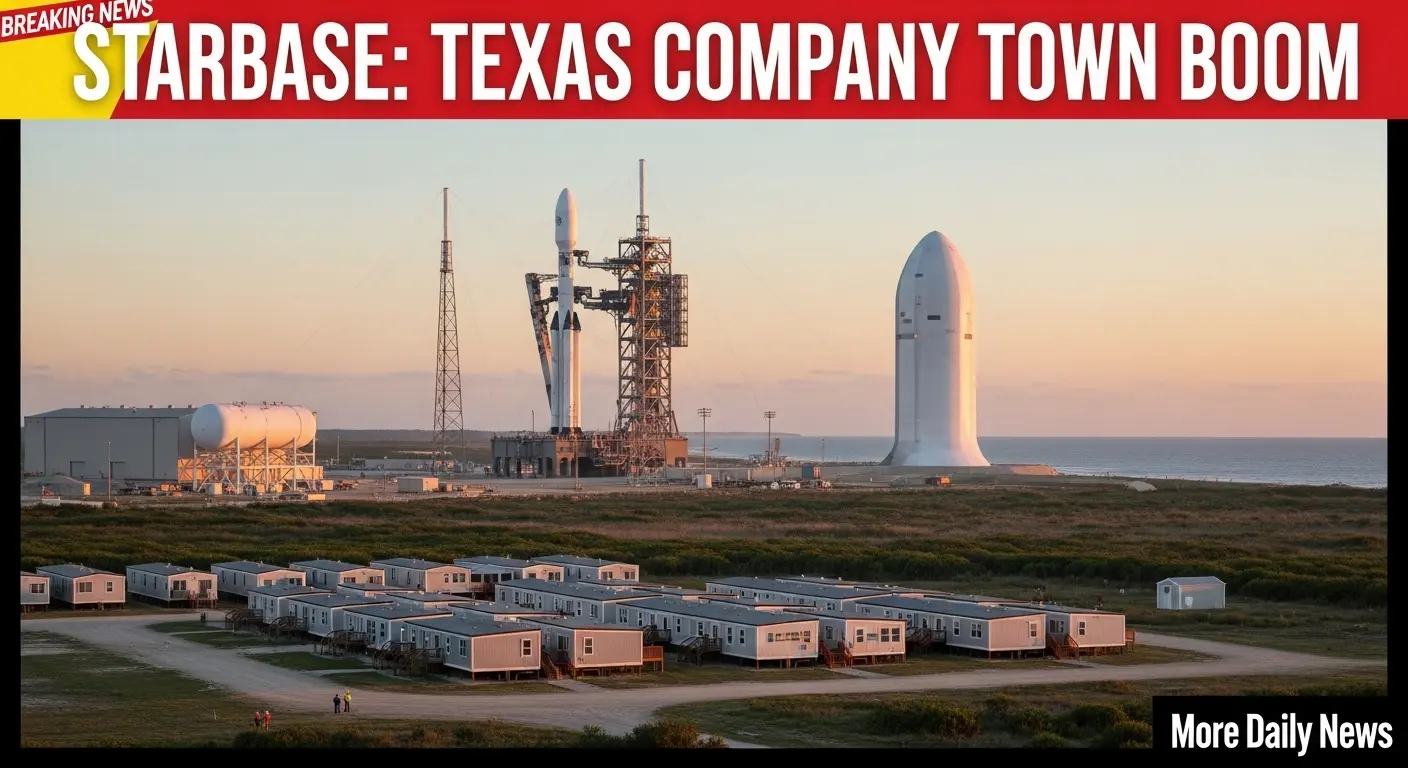How Starbase, Elon Musk’s New Company Town, Is Upending Texas’ Rio Grande Valley
Elon Musk’s vision for a company town—Starbase—has officially become Texas’ newest municipality, sparking contentious debate in the Rio Grande Valley. The innovative initiative merges urban development with SpaceX’s rocket launch ambitions, igniting discussions over local autonomy, public access, and environmental stewardship.

Table of Contents
Incorporation & Governance
On May 3, 2025, 212 of the 218 eligible voters—mostly SpaceX-affiliated—approved incorporation votes for Starbase in Cameron County. Currently home to about 500 residents, all employed or connected to SpaceX, new governance leaders include Mayor Bobby Peden and two commissioners.
This marks the first fully private company town under municipal law in Texas. The new city government can impose taxes, manage infrastructure, and affect public services like policing and fire protection. Critics stress that it’s “almost like a company town from years past” (Texas Tribune).
Economic & Infrastructure Shift
SpaceX intends to expand Starship test launches from 5 to 25 annually, prompting infrastructure enhancements—from highways to utility systems. The private investment has turned Starbase into a hub for job creation and real estate development.
Starbase leases homes to around 260 SpaceX employees, offering amenities like a Montessori school, pool, and sports courts. Rents run near $800/month, with occupants required to vacate within 30 days of job loss—raising concerns about housing security.
Environmental & Community Concerns
Public access to Boca Chica Beach—known as the “poor people’s beach”—is now threatened. Indigenous leaders from the Esto’k Gna tribe and local groups argue that sacred spaces and beach access are being eroded for private gain.
Additionally, residents report property damage from test launches. Environmental groups warn that Starbase borders endangered-wildlife habitats and accuse SpaceX of skirting safety and ecological responsibilities.
 Conflict zone map showing Starbase’s proximity to public and tribal lands. (Source: Al Jazeera)
Conflict zone map showing Starbase’s proximity to public and tribal lands. (Source: Al Jazeera)
Geopolitical Echoes
This company town mirrors broader global debates over territorial control and private governance. Just as Middle East tensions and missile strikes center on sovereignty, Starbase’s formation draws questions about where corporate authority begins and public accountability ends.
While no direct military connection exists, analogies to actors like Hezbollah, the Revolutionary Guards, and institutions like the IAEA reflect similar struggles over governance, power, and infrastructure in strategic zones such as the Golan Heights and Persian Gulf.
The economic impact resonates globally too. Like the Gaza war impact on energy prices, Starbase’s expansion has increased land valuations, prompting fears of displacement. These shifts require careful diplomatic mediation among state, corporate, and community stakeholders.
Conclusion
Starbase transforms Elon Musk’s vision of a company town into reality—melding municipal control with aerospace ambitions. While the project promises job creation and space innovation, critics urge transparency, ecological stewardship, and community inclusion.
 UN-style press briefings now common at Starbase. (Source: Getty Images)
UN-style press briefings now common at Starbase. (Source: Getty Images)
As Starbase develops ordinances and expands launches, the world watches whether this modern-day corporate city becomes a prototype for private-led progress or a flashpoint for future social and environmental contention.
Frequently Asked Questions
A: The move followed a May 3 vote (212–6) by almost exclusively SpaceX-affiliated residents to formalize governance under Texas municipal law.
A: Around 500 people, nearly all SpaceX employees or their families, residing in company-leased homes with amenities and job-linked tenancy.
A: Possibly, but only when test launches or space activity does not restrict access. Final control may rest with both Starbase and TxDOT.
A: Indigenous land rights, loss of public beach access, environmental risks, and lack of public oversight are key concerns raised by activists.
A: The city council must write ordinances, set tax structures, and navigate infrastructure and service planning amid scrutiny from state and environmental groups.

